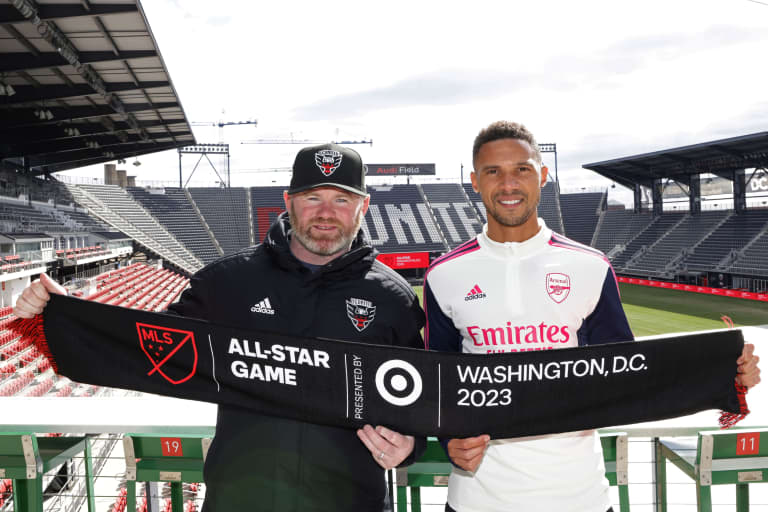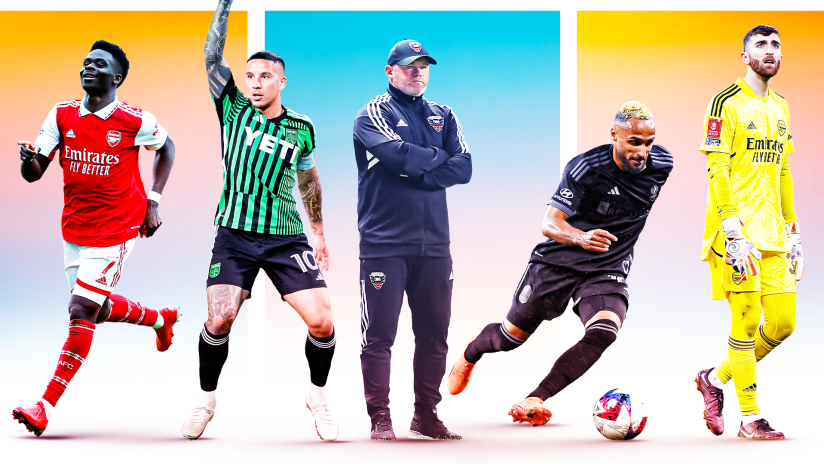In the wake of the announcement that English Premier League leaders Arsenal will hit the District of Columbia as the honored guests for this summer’s MLS All-Star Game presented by Target at Audi Field, it felt right to hark back a bit, to the last time the London giants joined the league’s midsummer party.
Yes, the Gunners have shared this marquee before. The venerated Arsene Wenger led AFC to San Jose for the 2016 edition of the ASG, christening the Earthquakes’ long-awaited new home, PayPal Park (it was called Avaya Stadium back then). And, as is their tradition, conceding a goal to Didier Drogba, en route to a fun 2-1 win in front of 18,000 fans.
You might be thinking, ‘hey now, 2016, that was just the other day,’ and yes, dear reader, we thought the same at first glance. But the Gunners will encounter a very different vintage of Major League Soccer than the one they met under the NorCal sunshine that July.
Massive expansion
Back then, there were just 20 teams in MLS. Ground had yet to be broken at the 2023 ASG venue, Audi Field, with D.C. United based at ancient RFK Stadium for a bit longer. The mighty Seattle Sounders hadn’t won an MLS Cup quite yet, much less the Concacaf Champions League, which had nary a single MLSer in the semifinals that year, let alone a winner.
Current reigning champs LAFC existed, but only in a manner of speaking: The successor to Chivas USA had their name and crest, but no coach, players or stadium yet. Minnesota United were completing their final season in the NASL, three years from the opening of glittering Allianz Field. Atlanta United’s paradigm-shifting entry into MLS was still months away.
Inter Miami, Nashville SC, Austin, Charlotte FC and St. Louis CITY SC – and all the sprawling investment that accompanied them – were just twinkles in their respective founders’ eyes. FC Cincinnati were just a few months into their inaugural season in the USL Championship, the very beginning of their incredible road to the top flight.
Twelve stadiums in all, 10 of them soccer-first, and even more in the way of training facilities, academies, staff and other infrastructure. Notably, hosting the 2026 World Cup on North American soil was just an idea, too, years away from reality. All of this offers priceless levels of stability and sustainability, much like what Arsenal gained in moving from their old Highbury home to the Emirates Stadium 17 years ago.

Youth system takes shape
Back in ‘16, the U22 Initiative to ramp up the flow of elite young talent into the league didn’t exist, nor did Leagues Cup, MLS NEXT or MLS NEXT Pro. Some clubs and coaches had yet to be convinced the homegrown pathway thing was worth leaning all the way into, or that youthful imports with rich sell-on potential were a solid bet. Today, well... maybe we should just cue up a Thiago Almada or Brenden Aaronson highlight reel?
The league’s regulations were adjusted to help prime the pump. Today clubs keep more of the return on outbound sales, particularly on homegrowns, and can deploy more of their transfer income as allocation money. Today, the U22 push incentivizes acquiring blue-chip youngsters to the point they practically add extra Designated Player slots to the rosters of those who invest thusly. Not coincidentally, the average age of squads has crept downward over these last seven years.
That winter of 2015-16, the number of MLS players sold for fees to clubs overseas was less than half what it was in 2021-22. As you’d expect, the total income for those sales was far less, too; a report compiled by The Athletic a little over a year ago found last winter’s sales added up to somewhere north of $65 million in total base fees. Now the hunt for the next top prospect is keener than ever.
The player that draws the most buzz to PayPal Park these days, Quakes homegrown teen Cade Cowell, was a mere 13 years of age over in Ceres, California – still two years away from joining their academy – when Arsenal visited what’s now his home stadium. Today he’s got UEFA Champions League clubs monitoring him and large seven-digit numbers bandied about as a potential price tag.
The USMNT’s latest dual-national recruit, Club America’s Alejandro Zendejas, was the most notable homegrown sale in the summer of ‘16, moving from FC Dallas to Chivas Guadalajara for a reported $500,000 fee. Last year that same FCD set all kinds of records with the sale of Ricardo Pepi to Augsburg on a deal worth somewhere around $20 million.
A world of possibility
Arsenal, who know a thing or two about player development, have gotten in on the act themselves. In addition to being fully owned by Colorado Rapids owner/investor Stan Kroenke since 2018, they currently have two Americans on their books. Philadelphia Union product and ex-Rapid Austin Trusty is one, albeit currently out on loan at Birmingham City; goalkeeper Matt Turner, the Gunners’ most prominent North American representative, is the other.
Turner backstopped the US men’s national team’s run to the Round of 16 at the 2022 World Cup after his multi-million-dollar transfer from the New England Revolution to North London earlier in the year. Seven years ago he’d just gone unselected in the 2016 SuperDraft and was about to spend his first professional season down at Richmond Kickers. His incredible story, perhaps as much as anyone’s, underlines the promise of MLS as a place where stars can shine, but also be made.
As anyone who’s ever caught a nasty case of #MLSAfterDark can readily tell you, life comes at you fast in this league. For a player like Turner – who didn’t play high-level competitive soccer until well into his teens – to climb as far and as fast as he did in those ensuing years, or someone like Cowell to skyrocket onto the radar of big European clubs and the USMNT before he’s old enough to rent a car, points to an absurd speed of evolution. One dizzying to unfold from a long-range view.
That’s why this summer’s big event represents a timely reconnection with the Old Continent. The past two years brought rich new cross-border spectacles in partnership with Liga MX, and those growing ties took on a more permanent character with the launch of the expanded Leagues Cup, which will debut days after the All-Star Game. All-Star is always a chance to get further acquainted on and off the pitch – hopefully the likes of Robbie Lyle, ‘Troopz’ and other Gunners superfans will drop in for some D.C. culture! – and find some common ground.
AFC, for their part, had to rediscover themselves after two decades of top-four finishes in the EPL ended in 2017. Only three members of the 2016 All-Stars starting XI are still playing in the league; just two of Arsenal’s are still Gunners today. The Londoners wandered through mid-table for a bit, painfully parted ways with Wenger and his immediate successor Unai Emery, gave Mikel Arteta some time to settle in and now are resurgent: eight points clear atop the Premier League table with 10 matches to go.
Not to jinx them, but this North American summer tour can be both preparation and party. It makes sense for MLS’s best to link up with the freshly-crowned champions of England and show them, and their enormous chasing pack of fans and media, how things have grown on this side of the pond. And there’s nary a bad seat in the house at Audi Field, one of the most intimate – and centrally located – venues on the continent.
We’ll see you at Buzzard Point.













